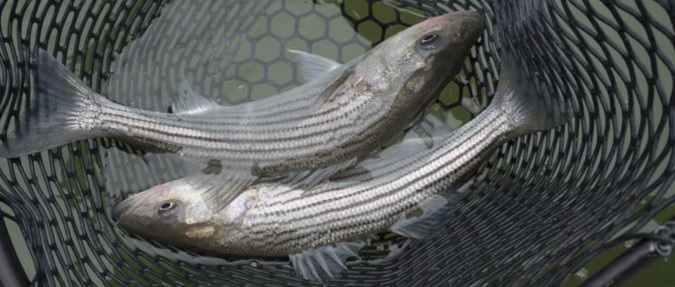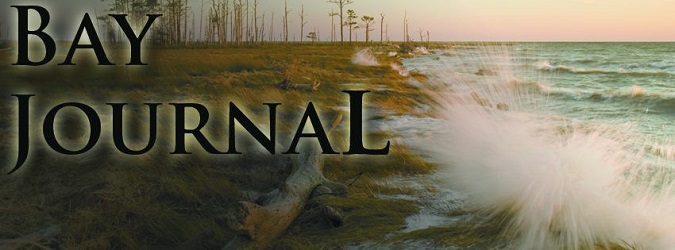
Striped bass can’t get a break, it seems. With their East Coast population in decline from overfishing, the migratory species had mixed success reproducing in the Chesapeake Bay this year, surveys show.
The state Department of Natural Resources reported last week that its annual trawl survey of newly spawned striped bass in Maryland waters yielded just 2.5 little fish per net haul — far below the long-term average of 11.5 per sample.
“We just didn’t have good recruitment [of young fish] this year,” said Mike Luisi, the DNR’s director of fisheries monitoring and assessment. “It kind of just goes along with everything else in 2020 that’s just been tough.”
This is the second straight year and the 10th in the last 15 years that the DNR survey found evidence of below-average striped bass reproduction.
A separate study done by the Virginia Institute of Marine Science found an above-average number of juvenile striped bass in that state’s tributaries of the Chesapeake Bay. It was the eighth straight year in which the survey tallied an average or above-average abundance for the species.
But VIMS cautioned that its finding of 13.89 young fish per seine haul in 2020 — compared with a long-term average of 7.77 per haul — could be inflated. Its survey had to be curtailed by nearly one-fifth because of Tropical Storm Isaias and restrictions placed on research as a precaution for the coronavirus pandemic.
Another study using an alternative measure for striped bass abundance indicated the 2020 spawn produced an average number of young fish, VIMS noted.
Striped bass, also known as rockfish, are a highly prized recreational and commercial catch along the entire Atlantic Coast. But they also play an important role as a top predator in the Bay.
Three times every summer since 1954, DNR biologists have surveyed 22 sites in four major fish spawning areas in the Choptank, Nanticoke and Potomac rivers and the Upper Bay. They collect and count all of the “young of year” fish caught in two sweeps through shallow waters with a 100-foot seine net. The average number of recently hatched striped bass gets tallied in an annual index of juvenile abundance.
VIMS conducts a similar survey for “young of year” striped bass, seining 18 spots in the Rappahannock, York and James river watersheds five times every summer. The institute has been conducting the survey since 1967 for the Virginia Marine Resources Commission.
“By estimating the relative number of young-of-year striped bass, our survey provides an important measure of annual and long-term trends in the Bay’s striped bass population,” said VIMS Professor Mary Fabrizio, who directs that state’s annual survey.
It’s not uncommon for the two states’ surveys to get different results, though it’s not clear why. VIMS noted that it also found average juvenile abundance in 2013, 2016 and 2019 when Maryland DNR got below-average numbers those years.

Despite the signs of poor spawning success again in Maryland, Luisi said, “I still don’t think the sky is falling.” He noted there had been a couple times in the last 15 years when reproduction in state waters was well above average.
Striped bass spawning success varies from year to year, as it does with many other fish species, and it is influenced by environmental factors such as water temperature and rainfall.
“We’ve had these events before,” Luisi said. “We plan to continue with all of our conservation measures that we need to do to increase [the size of the] spawning stock … to whatever degree we can.”
The striped bass population has been in trouble before. It declined drastically in the late 1970s and early 1980s, rebounding only after Maryland, Virginia and Delaware imposed fishing moratoriums and other states severely restricted catches. After an extended period of renewed abundance, the species began to decline again more than a decade ago, a gradual swoon that finally prompted East Coast fishery managers last year to order an 18% reduction in catch coastwide.
Now, the Atlantic States Marine Fisheries Commission, which regulates near-shore fishing for striped bass and other migratory fish, is weighing a revision of its overall management plan for rebuilding and maintaining striped bass stocks.
By Tim Wheeler, the Bay Journal’s associate editor
